Klasika odsvirana kao da je baletni plastic metal i letargična avant-gotika.
Driver je i frontman bendova Maudin Of the Well i Kayo Dot..
icelevelmusic.bandcamp.com/album/ichneumonidae-official-soundtrack
Named after a family of parasitic wasp, this is the official soundtrack to "Ichneumonidae," the forthcoming dance film choreographed and performed by Michelle Morinaga, and directed by Brian Gonzalez (TAXIPLASM)
In the L.. L.. Library Loft (2005)
This is basically a Kayo Dot album under the composer's name. Nearly all the performers on this record were members of Kayo Dot at the time. The compositions are much more abstract though and were unable to be performed in a live rock club setting by Kayo Dot, and have a bit more of a "modern classical" perspective, hence the nomenclature.
Much of the music published under the modern classical umbrella these days tends to be instantly pleasing, lavishly orchestrated wallpaper. The same can definitely not be said about Ichneumonidae, the latest release by Toby Driver. Equally the soundtrack to a ballet and soon-to-be-released dance film as well as a stand-alone piece for electro-acoustic trio, it constantly challenges and confounds the listener's expectations, taking surprising twists and turns as it moves through three densely scripted scenes of electrifying musical suspense. Already its underlying concept, named after a family of wasps, is anything but light fare, revolving around the topic of "parasitism in three stages". And yet, there is plenty of beauty to discover here as well, especially in the quiet, dreamy passages, when the interplay between Driver's guitars and synths, Timba Harris's stringwork and Russell Greenberg's delicately brushed percussion reaches its emotional climax, this is music of great intimacy and mystery. Ichneumonidae could easily do without a programmatic foundation. But the conceptual approach is never a crutch here - knowing about the darkly glowing narrative unfolding underneath only adds to the intensity of the experience.
How integral are concepts for your composing process in general?
It’s only something that I’ve recently begun approaching from the concept side first. In the past, the lyricist I’ve most often worked with (Jason Byron) has fit his own narratives to music that I’ve presented to him, but with Ichneumonidae as well as the last Kayo Dot album, Hubardo, the concepts came first. I feel that working this way definitely produces ideas and results that would not have come up the other way around, and that’s actually quite exciting to me. One thing I have to mention, though, is that I look at Ichneumonidae as more of a synaesthetic exploration, where the music is trying to evoke the shapes and movements of parasites more than it is their process (although that’s in there as well), and I think the choreographer, Ms. Morinaga, shares this perspective. As far as the parasites’ process is concerned, I look for the deeper truths such as symbiosis and conquest, and think of it as a spiritual symbol rather than as a scientific curiosity. Hubardo is the same, too – there’s a superficial story that symbolically expresses something much deeper.
It’s only something that I’ve recently begun approaching from the concept side first. In the past, the lyricist I’ve most often worked with (Jason Byron) has fit his own narratives to music that I’ve presented to him, but with Ichneumonidae as well as the last Kayo Dot album, Hubardo, the concepts came first. I feel that working this way definitely produces ideas and results that would not have come up the other way around, and that’s actually quite exciting to me. One thing I have to mention, though, is that I look at Ichneumonidae as more of a synaesthetic exploration, where the music is trying to evoke the shapes and movements of parasites more than it is their process (although that’s in there as well), and I think the choreographer, Ms. Morinaga, shares this perspective. As far as the parasites’ process is concerned, I look for the deeper truths such as symbiosis and conquest, and think of it as a spiritual symbol rather than as a scientific curiosity. Hubardo is the same, too – there’s a superficial story that symbolically expresses something much deeper.
What are the particular pleasures of a project like this compared to your work with Kayo Dot?
The two main things are, firstly, seeing something on a page spring to life in congruency and secondly, the music is quiet, which means in performance I can actually hear every detail! When you play with an extremely loud band, there are always elements that you can’t hear from your place on the stage (until you get to the point where you’re playing nicer venues and have your own front-of-house engineer and that kind of thing).
The two main things are, firstly, seeing something on a page spring to life in congruency and secondly, the music is quiet, which means in performance I can actually hear every detail! When you play with an extremely loud band, there are always elements that you can’t hear from your place on the stage (until you get to the point where you’re playing nicer venues and have your own front-of-house engineer and that kind of thing).
What are the musicians for Ichneumonidae bringing to the table from your perspective?
Ichneumonidae is the first piece I’ve ever written that was transcribed in true classical fashion – that is, it was written out 100% specifically. In the past, when I’ve done non-rock music (in my projects Tartar Lamb or In The L..L..Library Loft), I was still writing for the members of my rock bands, who, although classically trained and fantastic in their own right, were not the type of musicians whose strongest suit was their exactitude in reading an insanely specific chart and being able to passionately render the music that way. With those guys, the way I worked was always to have fragmented and flexible charts, and then work out timing and phrasing in rehearsals as opposed to on the page. Ichneumonidae was different because I wanted to do something that I could write out 100% specifically, without any flexibility. The musicians in the ensemble are guys that I’ve been working with for the past couple years and through working with them on other projects, I knew that they had a more classical and faithful approach to score-reading, and also had the technical ability to perform the music correctly as well as the aesthetic, grace, and personality needed to express the sound with empathy. My ideal, when it comes to the interpretation of a piece, totally depends on the piece. I still create music in flexible contexts, and sometimes that’s what’s needed. But because of my experience working on Ichneumonidae, I’m extremely interested in doing some more music that requires this combination of an understanding of my personal language and aesthetic, and the ability to execute the ideas without compromise.
Ichneumonidae is the first piece I’ve ever written that was transcribed in true classical fashion – that is, it was written out 100% specifically. In the past, when I’ve done non-rock music (in my projects Tartar Lamb or In The L..L..Library Loft), I was still writing for the members of my rock bands, who, although classically trained and fantastic in their own right, were not the type of musicians whose strongest suit was their exactitude in reading an insanely specific chart and being able to passionately render the music that way. With those guys, the way I worked was always to have fragmented and flexible charts, and then work out timing and phrasing in rehearsals as opposed to on the page. Ichneumonidae was different because I wanted to do something that I could write out 100% specifically, without any flexibility. The musicians in the ensemble are guys that I’ve been working with for the past couple years and through working with them on other projects, I knew that they had a more classical and faithful approach to score-reading, and also had the technical ability to perform the music correctly as well as the aesthetic, grace, and personality needed to express the sound with empathy. My ideal, when it comes to the interpretation of a piece, totally depends on the piece. I still create music in flexible contexts, and sometimes that’s what’s needed. But because of my experience working on Ichneumonidae, I’m extremely interested in doing some more music that requires this combination of an understanding of my personal language and aesthetic, and the ability to execute the ideas without compromise.
In which way have electronic means added to the palette of the composer, even in a mostly acoustic environment like this one, do you feel?
In the way that they’re just another instrument, are beyond contemporary, and shouldn’t be seen as simply a juxtaposition. Composers have been using electronics for more than half a century now. I think often in live presentation, unfortunately, it’s difficult to present electronic elements in a way that matches the acoustic elements. But I think that entirely has to do with boring shit like budget and resources. Speaking of those things too, maybe the most exciting way that electronics have added to the palette of the composer is that they are something composers can use at home, in perfect fidelity, with basically zero regard to budgetary constraints. When you’re a composer like me, who gets no funding for anything, being able to have the option to use electronics as opposed to an unaffordable additional violinist (for example) is crucial to the production of new works.
In the way that they’re just another instrument, are beyond contemporary, and shouldn’t be seen as simply a juxtaposition. Composers have been using electronics for more than half a century now. I think often in live presentation, unfortunately, it’s difficult to present electronic elements in a way that matches the acoustic elements. But I think that entirely has to do with boring shit like budget and resources. Speaking of those things too, maybe the most exciting way that electronics have added to the palette of the composer is that they are something composers can use at home, in perfect fidelity, with basically zero regard to budgetary constraints. When you’re a composer like me, who gets no funding for anything, being able to have the option to use electronics as opposed to an unaffordable additional violinist (for example) is crucial to the production of new works.
The arrangements on Ichneumonidae have a twisted fluidity about them, moving from one surprising constellation to the next with astounding grace. What was the writing process for the music like?
Thanks! A lot of the parts were based on photos of different parasites that Ms. Morinaga gave me as visual inspiration. I tried to shape the sections of music analogously to the way these things curled, undulated, and swam through blood. Fortunately, the development of parasites is very stage-oriented, and so nature has already set a timeline that the architecture of the composition was able to follow. Another thing, which is probably going to sound childish, but hear me out ... I was also sonically inspired by the soundtracks to the Metroid franchise of video games. Anyone who’s played any of these games (especially the later ones) probably will get what I’m talking about. The Metroid games also have an intrinsic parasite thread running throughout all of them. I don’t think Ms. Morinaga knows about this, but it’s a guilty secret I’m not ashamed of.
Thanks! A lot of the parts were based on photos of different parasites that Ms. Morinaga gave me as visual inspiration. I tried to shape the sections of music analogously to the way these things curled, undulated, and swam through blood. Fortunately, the development of parasites is very stage-oriented, and so nature has already set a timeline that the architecture of the composition was able to follow. Another thing, which is probably going to sound childish, but hear me out ... I was also sonically inspired by the soundtracks to the Metroid franchise of video games. Anyone who’s played any of these games (especially the later ones) probably will get what I’m talking about. The Metroid games also have an intrinsic parasite thread running throughout all of them. I don’t think Ms. Morinaga knows about this, but it’s a guilty secret I’m not ashamed of.
The video and dance elements appear to be inseparable from the music in this case. How do you see the relationship between image and sound – where do they tend to enhance each other, where do they tend to get in each other's way?
There’s a really great museum in Astoria, New York, called the Museum of the Moving Image, and in one of their exhibits, they give you the opportunity to apply different clips of music to scenes from famous films to show you how the sound completely changes the feeling you get from the scene. I think it was through this exhibit that I realized that any possibility of combinations works in its own way, there’s no right or wrong application, and the decision about whether you like it or not comes later. Maybe the only time that image and sound get in each other’s way is when those pieces haven’t premiered that way, allowing the audience to imagine their own relationships; when someone else’s visions are applied later, they can really conflict with what the audience originally had in their mind’s eye. In the case of Ichneumonidae, presenting the Official Soundtrack before the film is ready does create that potential situation, for the music, but from the other way around, the first time the film is presented, it’ll have this soundtrack and for the film viewers the music should be inextricable from the images. I think it’s cool to offer both potential situations.
- Interview by Tobias Fischer
Homepage: Ichneumonidae on Bandcamp
Homepage: Kayo Dot
discography
There’s a really great museum in Astoria, New York, called the Museum of the Moving Image, and in one of their exhibits, they give you the opportunity to apply different clips of music to scenes from famous films to show you how the sound completely changes the feeling you get from the scene. I think it was through this exhibit that I realized that any possibility of combinations works in its own way, there’s no right or wrong application, and the decision about whether you like it or not comes later. Maybe the only time that image and sound get in each other’s way is when those pieces haven’t premiered that way, allowing the audience to imagine their own relationships; when someone else’s visions are applied later, they can really conflict with what the audience originally had in their mind’s eye. In the case of Ichneumonidae, presenting the Official Soundtrack before the film is ready does create that potential situation, for the music, but from the other way around, the first time the film is presented, it’ll have this soundtrack and for the film viewers the music should be inextricable from the images. I think it’s cool to offer both potential situations.
- Interview by Tobias Fischer
Homepage: Ichneumonidae on Bandcamp
Homepage: Kayo Dot
discography
-
Hubardo 2013
It starts off inconspicuously enough, a series of instrumental swells that set the sombre and dark mood for the rest of the album. And then the growls enter, delivered as if part of a spoken word piece, each individual syllable pronounced as if there was all the time in the world. The swells become broader and more intense, a series of free jazz excursions, progressing seemingly without time signature and predetermined direction. After a full six and a half minutes of rising tension, the swells finally break away, resolving into a slow, cautious melody. But even that is not safe from the impending development, persistently repeating its rhythm as an inexorably accelerating manta driving towards infinity. It sounds like a whirlpool, or a hurricane--some kind of endlessly cyclic, destructive force, hypnotic in its beauty and utterly devastating in its power. And then, with less than two minutes to spare, all bets are off, the music delving into the purest, most aggressive, and unfiltered death metal imaginable.
And that's just in the first ten minutes.
Hubardo (hoo • BAHR • doh, meaning "lantern" or "lamp" in the most definitely real and not at all fake language Enochian) isn't something to be casually heard. This monster of a piece clocks in over one hundred minutes, spread amongst only eleven tracks, and is only the latest in a series of fantastic albums by Toby Driver's avant-everything band, Kayo Dot. It also happens to be, quite literally, the best piece of music released of his already ridiculously impressive career..
The album follows the transformation of a self-loathing poet to inspired madman, a fallen meteor having captured his attention and enchanted him with its magickal allure. Aurally, this is captured by the album's heavily free-form nature, eschewing traditional semblances of song structure and lyric form in favour of compositions that directly realize their ideas without compromise. The pieces are all long, winding, and complex, but not out of a desire to obfuscate or show off; rather, it seems as if this is the only possible way these pieces could have been written. To be more precise, they were crafted to fit the story, not the other way around, and it's this artistic dedication which gives the album its true timelessness. It may feel winding and digressing, but every moment works towards a clearly established overarching goal, a pattern which can only be seen when viewing the album as a whole work.
Style and genre have almost no meaning where this album is concerned; influences from folk, post-, jazz, metal, prog, classical, and even chamber music are all treated with equal weight, creating a brilliant fusion of sounds that defies any easy description. Though there seem to be general rules to how the story affects the style of a piece, there are no direct motifs or themes, and the rules appear to be broken as often as they are not, rendering any attempts to pigeonhole largely meaningless. The shorter piece "Thief" is the most blatant example of this paradigm, willfully shifting from free jazz with operatic vocals to heavy metal with a heavily classical sensibility without so much as a thought given to the listener, nor its own context. And it's far from alone in this respect; "Floodgate" features a King Crimson-esque cacophony of blaring horns and frantic percussion before resolving into '90s-style tech death, and even the short "Vision Adjustment to Another Wavelength" changes styles three times in the space of just five minutes. Even the few ethereal ballads fall prey to the predominant chaos; both "The First Matter" and "The Second Operation" seem to build in traditional ballad form, but only one that is hidden under dense layers of compositional madness.
I'm trying to say that this album is really difficult to get a handle on.
And while this is all done in the service of Kayo Dot's artistic integrity--they, of all bands, would be last to compromise their art for the sake of accessibility--it can also be the album's greatest drawback. It is immensely difficult to listen to this album, not for the want of an easy melody, but by the attentiveness and dedication it requires to understand. It took me personally almost half a dozen listens before I began to see the full picture, and I consider myself a remarkably attentive listener. For that reason, Hubardo isn't above reasonable critical reproach. I can even see how it might be widely panned--it would be quite easy to argue that it's an directionless, formless mess of a recording, wandering without ever arriving or stating anything of importance.
But that's all part of the beautiful wit at the heart of this piece, one so smart and subtle that most listeners won't even know it's there, let alone understand the punchline. Critic James Huneker once remarked on Chopin's Étude Op. 25, No. 11that "small-souled men, no matter how agile their fingers, should avoid it." Historical sexism aside, the notion that certain music might remain inaccessible to those unable to put their full faith into it still rings true. Much like Driver's last double album, Hubardo is unrepentant in the toll it demands from its listeners, and if you're unwilling to meet it on the whole of its terms, it will forever stay beyond your grasp. It is only by fully immersing yourself that you will find the soul of this project, one that will be surely counted among the best in modern music.
Small-souled people, no matter how broad their tastes, should avoid it. - www.scenepointblank.com/
Hubardo (hoo • BAHR • doh, meaning "lantern" or "lamp" in the most definitely real and not at all fake language Enochian) isn't something to be casually heard. This monster of a piece clocks in over one hundred minutes, spread amongst only eleven tracks, and is only the latest in a series of fantastic albums by Toby Driver's avant-everything band, Kayo Dot. It also happens to be, quite literally, the best piece of music released of his already ridiculously impressive career..
The album follows the transformation of a self-loathing poet to inspired madman, a fallen meteor having captured his attention and enchanted him with its magickal allure. Aurally, this is captured by the album's heavily free-form nature, eschewing traditional semblances of song structure and lyric form in favour of compositions that directly realize their ideas without compromise. The pieces are all long, winding, and complex, but not out of a desire to obfuscate or show off; rather, it seems as if this is the only possible way these pieces could have been written. To be more precise, they were crafted to fit the story, not the other way around, and it's this artistic dedication which gives the album its true timelessness. It may feel winding and digressing, but every moment works towards a clearly established overarching goal, a pattern which can only be seen when viewing the album as a whole work.
Style and genre have almost no meaning where this album is concerned; influences from folk, post-, jazz, metal, prog, classical, and even chamber music are all treated with equal weight, creating a brilliant fusion of sounds that defies any easy description. Though there seem to be general rules to how the story affects the style of a piece, there are no direct motifs or themes, and the rules appear to be broken as often as they are not, rendering any attempts to pigeonhole largely meaningless. The shorter piece "Thief" is the most blatant example of this paradigm, willfully shifting from free jazz with operatic vocals to heavy metal with a heavily classical sensibility without so much as a thought given to the listener, nor its own context. And it's far from alone in this respect; "Floodgate" features a King Crimson-esque cacophony of blaring horns and frantic percussion before resolving into '90s-style tech death, and even the short "Vision Adjustment to Another Wavelength" changes styles three times in the space of just five minutes. Even the few ethereal ballads fall prey to the predominant chaos; both "The First Matter" and "The Second Operation" seem to build in traditional ballad form, but only one that is hidden under dense layers of compositional madness.
I'm trying to say that this album is really difficult to get a handle on.
And while this is all done in the service of Kayo Dot's artistic integrity--they, of all bands, would be last to compromise their art for the sake of accessibility--it can also be the album's greatest drawback. It is immensely difficult to listen to this album, not for the want of an easy melody, but by the attentiveness and dedication it requires to understand. It took me personally almost half a dozen listens before I began to see the full picture, and I consider myself a remarkably attentive listener. For that reason, Hubardo isn't above reasonable critical reproach. I can even see how it might be widely panned--it would be quite easy to argue that it's an directionless, formless mess of a recording, wandering without ever arriving or stating anything of importance.
But that's all part of the beautiful wit at the heart of this piece, one so smart and subtle that most listeners won't even know it's there, let alone understand the punchline. Critic James Huneker once remarked on Chopin's Étude Op. 25, No. 11that "small-souled men, no matter how agile their fingers, should avoid it." Historical sexism aside, the notion that certain music might remain inaccessible to those unable to put their full faith into it still rings true. Much like Driver's last double album, Hubardo is unrepentant in the toll it demands from its listeners, and if you're unwilling to meet it on the whole of its terms, it will forever stay beyond your grasp. It is only by fully immersing yourself that you will find the soul of this project, one that will be surely counted among the best in modern music.
Small-souled people, no matter how broad their tastes, should avoid it. - www.scenepointblank.com/
-
Gamma Knife 2012
-
Stained Glass 2010
-
Coyote 2010
-
Part The Second 2009
-
Sixty Metonymies 2007
-
Choirs Of The Eye 2003
-
The Secret Song 2001
-
Bath 2001
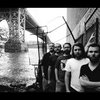
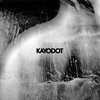

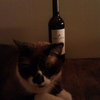
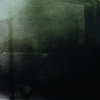
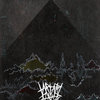
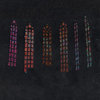

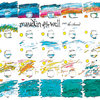

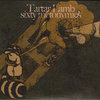



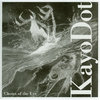

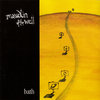
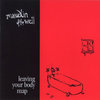
Nema komentara:
Objavi komentar